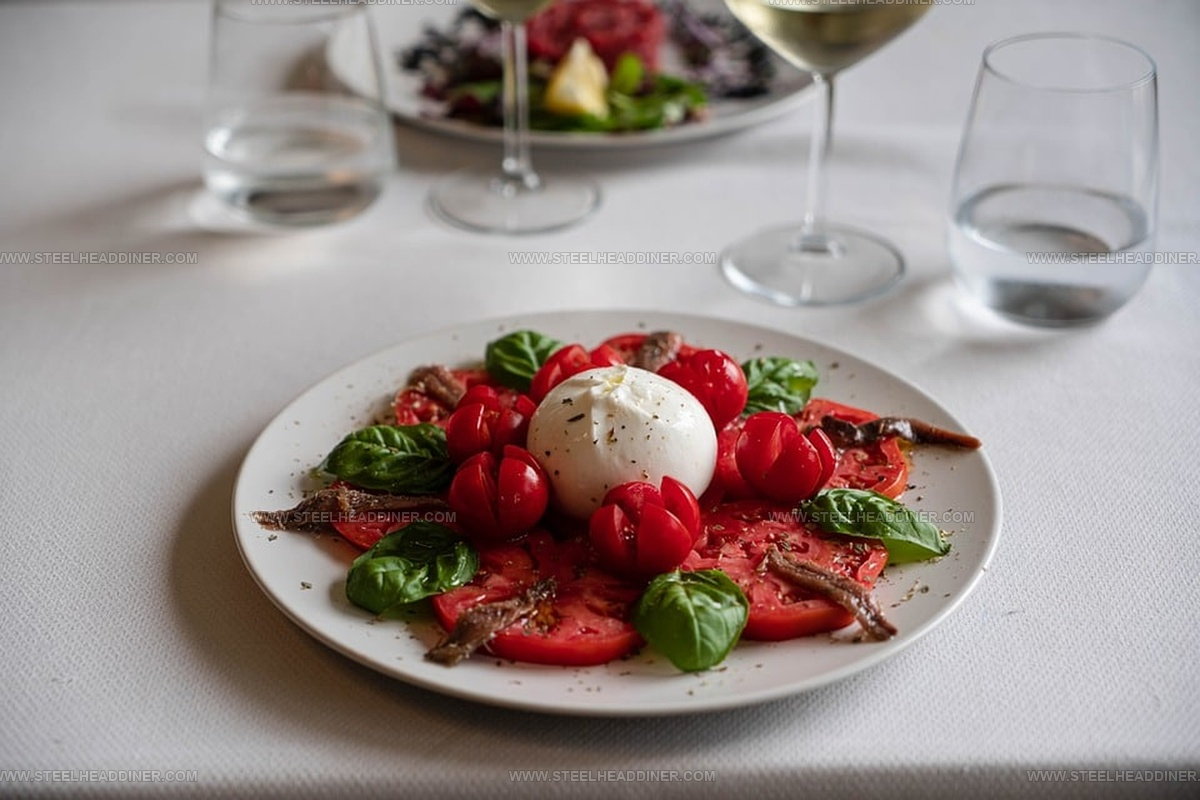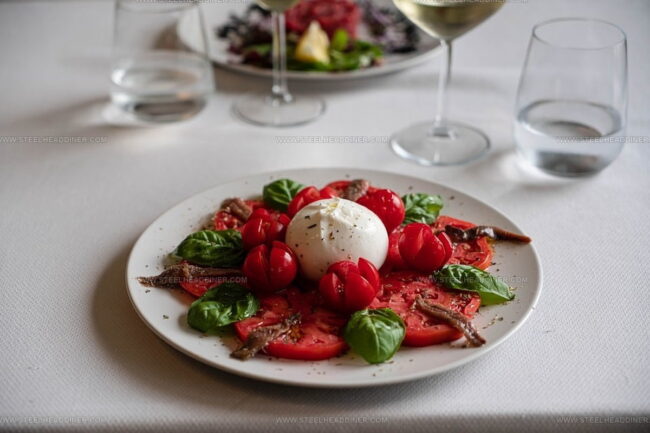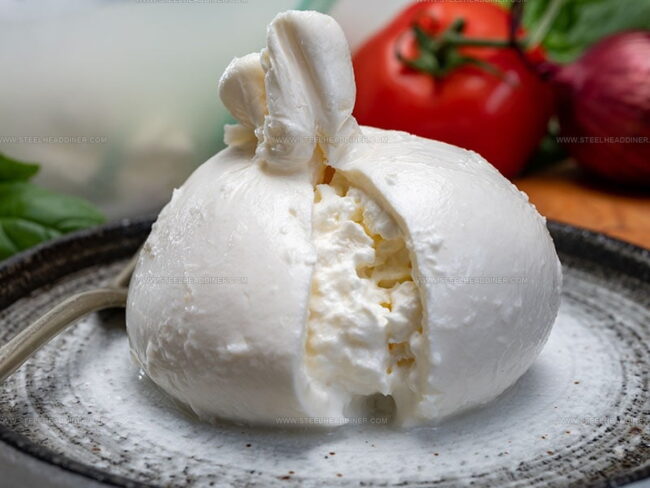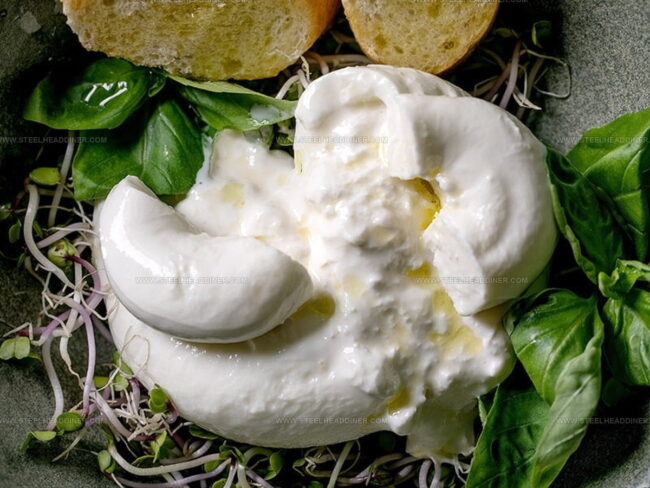What Does Burrata Cheese Taste Like? A Creamy Adventure Awaits
Burrata cheese, a luxurious Italian delicacy, beckons food lovers with its creamy allure and mysterious texture.
Originating from the Puglia region, this soft cheese has captured the hearts of culinary enthusiasts worldwide.
Its unique composition sets it apart from traditional mozzarella, promising a sensory experience that goes beyond ordinary dairy products.
Chefs and home cooks alike marvel at its delicate exterior and rich, indulgent interior.
The anticipation of cutting into a fresh burrata creates an almost magical moment at the dining table.
Each bite promises a journey of flavor and texture that transforms ordinary meals into extraordinary culinary adventures.
Unraveling the taste of burrata is like uncovering a delicious secret waiting to be savored.
Burrata Cheese: Introduction
Burrata is a perfect mix of textures that dance together, creating a world of calm enjoyment.
Soft outer layers wrap around a smooth center, sparking a sensory experience with its silky feel.
Slicing through reveals a rich center that slowly spills out like smooth cream.
Burrata charms with its special character and gentle flavor.
Soft, mild, and fresh, it captures attention with ease.
Local craftsmen in southern Italy make burrata using milk from buffalo roaming Apulia's green plateaus.
Meadows stretching between coastal areas and inland provide rich grasslands, giving the milk deep and full-bodied qualities for cheese makers.
Milk cheese reaches its best when pulled from cold storage about thirty minutes before serving.
Drizzle some olive oil and place it near ripe tomatoes, fresh basil, and crusty bread.
Matching it with sweet berries, honeydew melon, or grilled figs creates wonderful combinations.
What Burrata Cheese Tastes Like
Burrata cheese carries an Italian name that sounds delightful.
Origins of this word link directly to "butter" in Italian.
Smooth and creamy, burrata offers a rich and nutty taste sensation.
Someone tasting it might quickly understand why this cheese seems so magical.
Soft Italian cheese made from cow's milk describes burrata perfectly.
Outside looks similar to fresh mozzarella, while inside contains small curds and cream.
Buttery texture makes this cheese delicious when eaten alone.
Chefs love adding burrata to pizza.
Summer months highlight this cheese best when served with tomato slices and olive oil drizzle.
White cheesy ball with a center that spills out smooth filling defines burrata.
Unique flavor combines freshness and delicate milk notes.
Modern versions typically use cow's milk instead of water buffalo milk.
Savory appetizers work wonderfully with this cheese type.
Flavor feels like milk and sweet cream mixing with mozzarella.
Center section carries a wonderfully smooth and slightly sweet profile.
Mozzarella shreds blended with sweet cream or ricotta create similar taste experiences.
Preparation method impacts final flavor intensity.
Thin shells with a small knot at one end characterize burrata's structure.
Mozzarella cheese creates both shell and knot sections.
Creamy butter-like interior provides signature taste characteristics that make this cheese special.
Burrata Cheese Alternatives
Cheese experts often highlight Burrata's unique ability to blend different textures in ways other fresh cheeses struggle to match.
Mozzarella stands out as a smooth, gentle cheese with similar core qualities to Burrata.
Its texture feels like a soft cushion with more weight than related cheese types.
Chefs love matching it with ripe tomatoes and fresh basil during summer months.
Restaurants frequently add this cheese to classic dishes like risotto, pasta, or pizza.
Bocconcini represents a smaller version of young Mozzarella, crafted from water buffalo or cow milk.
Each small cheese ball matches the size of an egg and carries nearly identical flavor profiles.
Restaurants typically serve these delicate cheese pieces as quick starters or alongside dried ingredients.
How To Eat Burrata Cheese
Ripe tomatoes, a splash of olive oil, and a hint of salt pair perfectly with burrata cheese.
Burrata tastes wonderful alongside salads, crusty bread slices, and crispy crackers.
Soft summer fruits like grilled peaches, sweet melons, and juicy berries complement its mild flavor beautifully.
Burrata loses quality quickly if left uneaten.
Eating it within 24 hours works best since cheese quality declines after 48 hours.
Letting burrata sit out of the refrigerator for half an hour before serving helps bring it to the ideal temperature.
How to Serve Burrata for Special Occasions
Burrata is a creamy, rich cheese that makes any special occasion feel even more memorable when served with the right touches and pairings:
Serving burrata with a mix of fresh produce, warm bread, and flavorful toppings lets your guests enjoy this special cheese in many delicious ways.
Best Drinks to Pair with Burrata Cheese
Burrata cheese is rich and creamy, so pairing it with the right drink makes its flavors shine even more, whether you’re hosting a party or enjoying a quiet meal:
These drinks help highlight burrata’s creamy taste and make every bite feel a little more special.
Burrata Cheese: How It’s Made
Fresh burrata comes to life through skilled hands, with artisans creating the perfect texture through careful touch and years of practice.
Large vats fill with milk - either pasteurized or raw - as rennet slowly works to curdle the liquid.
Soft curds soon form and drop into bubbling whey, blending into a flexible mixture.
Skilled workers carefully pull and stretch the curd, creating a silky smooth texture like other stretched cheese styles.
Small movements and gentle touches guide the process.
Careful hands shape the soft dough into a delicate pouch, tucking torn mozzarella strands and rich cream inside before closing the top with precise movements.
Best flavor happens when burrata is enjoyed quickly, within one day of creation, as waiting longer dulls its special qualities.
Burrata emerges fresh and ready to eat, needing no extra aging or special treatment.
Crafted without any extra ingredients, this cheese offers a pure and simple taste experience free from gluten or artificial additions.
Burrata Compared To Mozzarella
Burrata and Mozzarella might look similar, but they're different cheeses with unique characteristics.
Cheesemakers start Mozzarella by mixing rennet and lactic ferments into pasteurized cow milk to create curd.
Workers extract the whey, then cut the curd into strips.
Next, they knead these strips in boiling water until the cheese stretches and spins.
Cold water helps form mozzarella pieces after spinning.
Burrata follows a similar initial process with stretched curd.
Its outside shell comes from this curd, but the curd isn't the main focus like in Mozzarella.
Inside the outer casing sits a smooth, creamy filling that sets it apart.
Mozzarella offers a delicate taste, while Burrata provides more complex flavors.
Burrata's cream center makes it softer and richer.
This extra filling also means Burrata contains more calories compared to its cheese cousin.





Maya Thompson
Culinary Content Creator & Nutrition Enthusiast
Expertise
Healthy single-serving recipes, Meal prepping for individuals, Integrating nutrition into everyday cooking, Vegetarian and plant-based cuisine
Education
The Chef’s Academy at Harrison College
Associate of Applied Science in Culinary Arts
Focus: Nutrition, meal planning, and culinary techniques for healthy living.
Maya found her passion in the kitchen by mixing good food with good energy. After earning her culinary degree at The Chef’s Academy at Harrison College, she made it her mission to keep cooking simple, wholesome, and packed with flavor.
At Steelhead Diner, Maya shares easy, healthy recipes built for real life. For Maya, great food seems like a celebration of everyday moments, made better one fresh bite at a time.